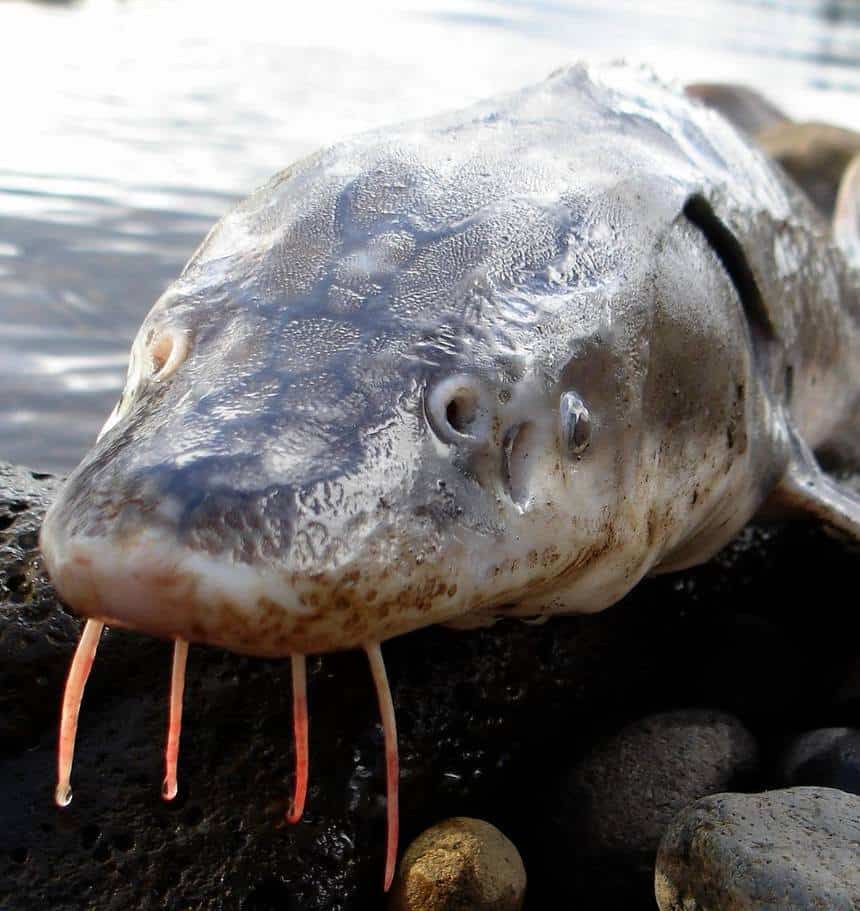
Delaware Riverkeeper sues EPA over dissolved oxygen standards
| October 8, 2024
An environmental group has taken the U.S. Environmental Protection Agency to federal court, accusing it of foot-dragging in finalizing regulations that would improve the health of the Delaware River and protect an endangered species of fish.
The suit, filed Oct. 2 by the Delaware Riverkeeper Network, is the latest development in a protracted, years-long fight to raise dissolved oxygen standards in sections of the river.
Simply put, the higher dissolved oxygen standards to be met by those with permission to discharge wastewater and other pollutants into the river, the better the quality of the water. That, in turns, makes for an improved environment for aquatic life because, like humans, fish “breathe” oxygen, just not from the air, but dissolved oxygen in the water.
In this case, the population of Atlantic sturgeon, the dinosaur-looking species of fish that have a face only a mother could love, are considered indicators of the water quality of sections of the river.
A healthy population of this endangered species of fish signals an improved, cleaner waterway with higher levels of dissolved oxygen. However, lower levels of dissolved oxygen indicate a degraded quality of water that does not support the spawning of the sturgeon, a species that date back 120 million years.
For complete coverage of the fight to improve dissolved oxygen in the Delaware, go to this Delaware Currents special collection of articles
Focus on an area with an oxygen “sag”
Efforts focus on an urban section of the river — roughly 38 miles from Philadelphia, Pa., to Wilmington, Del. — that are heavily industrialized and that are plagued with ammonia pollution arising from treated sewage (urine and feces) discharged into the river.
In many cities, there is also a problem of combined sewer overflow systems — a complication that allows stormwater to be funneled into sewer lines and to the wastewater treatment facilities.
If a storm is overwhelming enough, those treatment facilities get swamped and untreated or partially treated waste can pour into the river. That includes more oxygen-depleting ammonia (a byproduct of the breakdown of urine, for instance) as well as the stew of other contaminants that get poured or flushed down the drain.
Read more: DRBC cedes action on dissolved oxygen rules to the EPA
That’s where the regulators come into play.
The Delaware River Basin Commission, the agency made up of representatives of the federal government and governors of the four-state watershed (the U.S. Army Corps of Engineers, and New York, New Jersey, Pennsylvania and New York) in 2017 charged its staff with exploring the issue of improving dissolved oxygen levels in the so-called “sag” area of the river.
Last week the DRBC issued “A Pathway for Continued Restoration: Improving Dissolved Oxygen in the Delaware River Estuary,” as well as related modeling reports, that support updating designated uses and associated water quality standards in the Delaware River Estuary to better support fish populations.
“These reports collectively illuminate the path forward to an estuary that better supports all life stages and species of resident and migratory fish in this river, including the endangered Atlantic sturgeon,” said Steve Tambini, the commission’s executive director.
How we got here
In December 2022, the EPA responded to a legal petition filed by the Riverkeeper Network under the federal Clean Water Act urging the government to promptly initiate the rulemaking necessary to protect aquatic life in the Delaware Estuary. The agency announced it would develop updated regulations and cited the DRBC’s scientific, engineering and modeling work to support its findings that dissolved oxygen levels sufficient to support propagation of even the most sensitive aquatic species were attainable in these waters.
Then, four days before Christmas last year, the EPA announced it was proposing new rules to raise the oxygen level required in that section, getting the dissolved oxygen there closer to the levels in the rest of the river, thus making the urban section of the river healthier.
That, in turn, started a 90-day clock for the agency to finalize the rules, which, the Riverkeeper says, would have meant final standards being issued in May 2024. But since then, the EPA has not taken that last step, the Riverkeeper argues in its suit, which seeks to compel the agency to comply.
The EPA, citing the pending litigation, declined to comment on the suit.
“When the US EPA granted our petition seeking swift and strong action to develop and release stronger dissolved oxygen standards, followed by a draft proposal a year after, we were placed on an important path towards progress essential for saving the Atlantic Sturgeon of the Delaware River from extinction,” said Maya van Rossum, the Delaware Riverkeeper and leader of the Delaware Riverkeeper Network.
“It has been worrisome to see the process inexplicably slowed,” she continued. “While EPA appeared on track to promulgate the scientifically based dissolved oxygen standards in a timely manner, the deadline has long passed.”
She said the litigation was intended to keep the EPA’s “foot on the power pedal” to protect the sturgeon and foster conditions so it can survive and to thrive. “We simply do not have the luxury of time,” she said.







